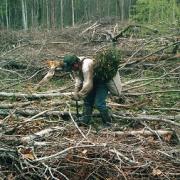Adapted from: Mary Nichols. 2007. Chapter 3: Hydrologic Processes in Riparian Areas. In: G. Zaimes (ed). Understanding Arizona’s Riparian Areas. University of Arizona Cooperative Extension. AZ 1432. Available at http://cals.arizona.edu/pubs/natresources/az1432.pdf
Water balance is a method of book keeping used to summarize the amount of water cycling from the atmosphere, across land surfaces, into the ground, through plants, into the ocean, and back the atmosphere. It provides a good framework for understanding hydrologic processes. Water balances can vary year to …





